2020 Toyota RAV4 XSE Hybrid Reviewed – Competency Matters
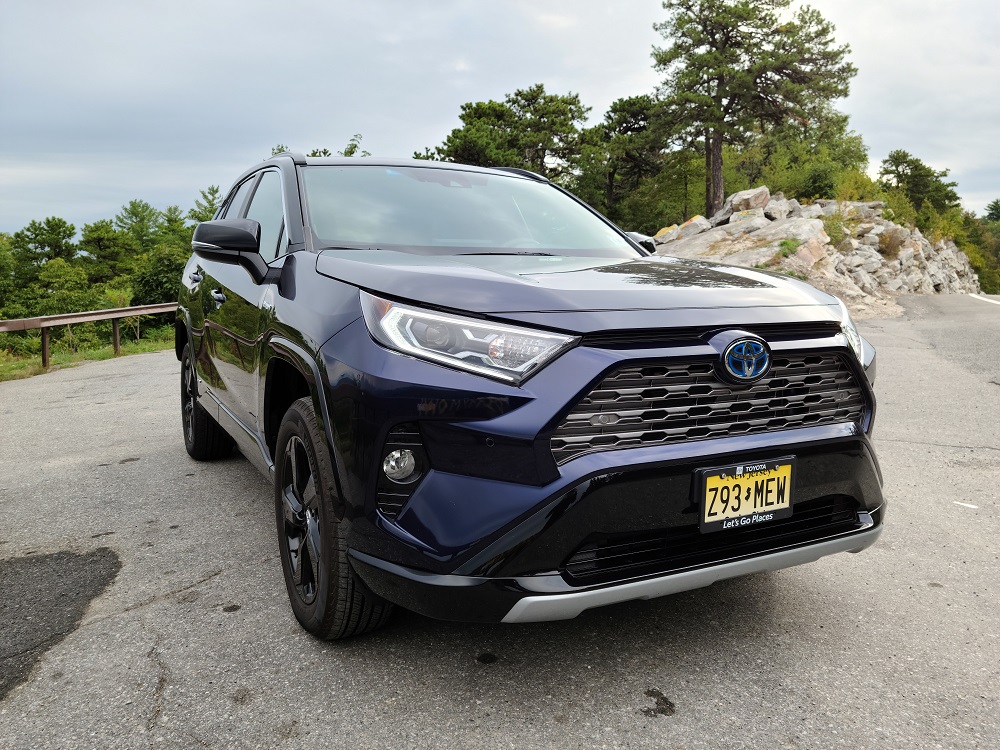
Despite lacking some polish, Toyota’s latest RAV4 Hybrid is super comfortable – and most likely better than its gasoline counterparts.
Toyota created a sprawling lineup of hybrids within the last few years. Basically, there is currently a model for pretty much all tastes. But the best one among the bunch might the the RAV4 Hybrid. It blends classic RAV4 qualities with the refinement of a hybrid engine.
However, it isn’t perfect. Some technological issues prevent it from being a truly spectacular vehicle. That being said, the RAV4 is an excellent commuter vehicle that will no doubt satisfy shoppers looking for a versatile small family mover.
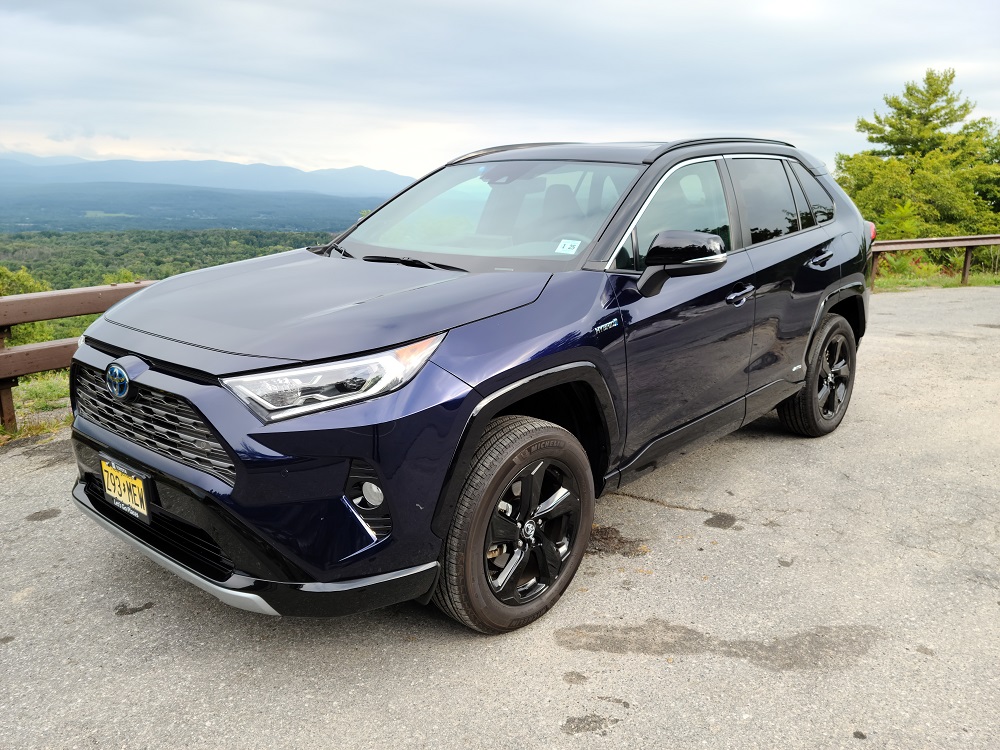
Best RAV4 Yet?
Toyota introduced the RAV4 just over 25 years ago. Since then, it has worn many different outfits. Fortunately, the latest model just might be the most attractive one yet. Toyota absolutely nailed the redesign. An impressive feat, considering the somewhat generic styling of its predecessors. Clearly, many people will be fooled into thinking the Rav4 sports actual utility vehicle credentials.
Part of that stems from how the RAV4 drives. Models clad in XSE trim receive what Toyota calls a “Sport-Tuned” front and rear independent suspension. My week with an XSE Hybrid equipped with such a setup did not convince me of its sportiness. Instead, it reinforced my theory that Toyota designed the suspension to mimic its larger siblings. The Toyota doesn’t absorb bumps but instead bounces over them. That’s not exactly a criticism. The Rav4’s chassis deflected rough roads adequately. It’s just a lot more vertically oriented than I expected. It gives the crossover the best aspects of a body-on-frame setup without many of the downsides.
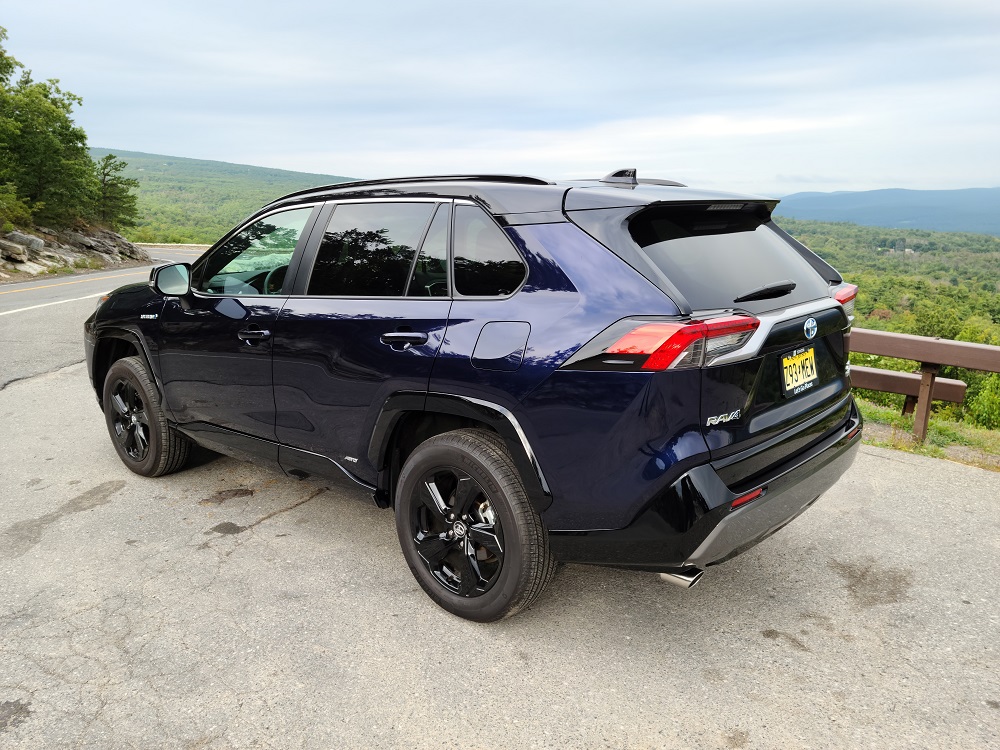
Handling a Hybrid
While the RAV4 behaves a bit like an actual SUV over bumps, it certainly doesn’t handle like one. Around curves, the Toyota expresses a desire to keep going. Steering remains a bit numb but inputs are immediately registered and it feels like the RAV4 always knows where you want it to go. Additionally, the hybrid powertrain enhances the driving experience. At 219 horsepower, the RAV4 felt rightly quick. I never felt like I needed more oomph. Better yet, the Toyota engaged the gasoline engine quickly and without fuss. In EV mode, there’s no feeling that power was sacrificed for fuel economy. Transitioning between modes is rarely felt either. Skeptical would-be hybrid owners shouldn’t have trouble adapting to the hybrid’s acceleration or general behavior while in motion.
Unfortunately, brake pedal feel lacked meaningful feedback. There’s a distinct sense of mushiness no matter how hard you’re pressing down. Combined with the regenerative braking system, the RAV4 seems to initially suggest strong braking power. But actually slowing down from speeds of roughly 40mph required more effort. Abrupt stops on multiple occasions frustrated me greatly.
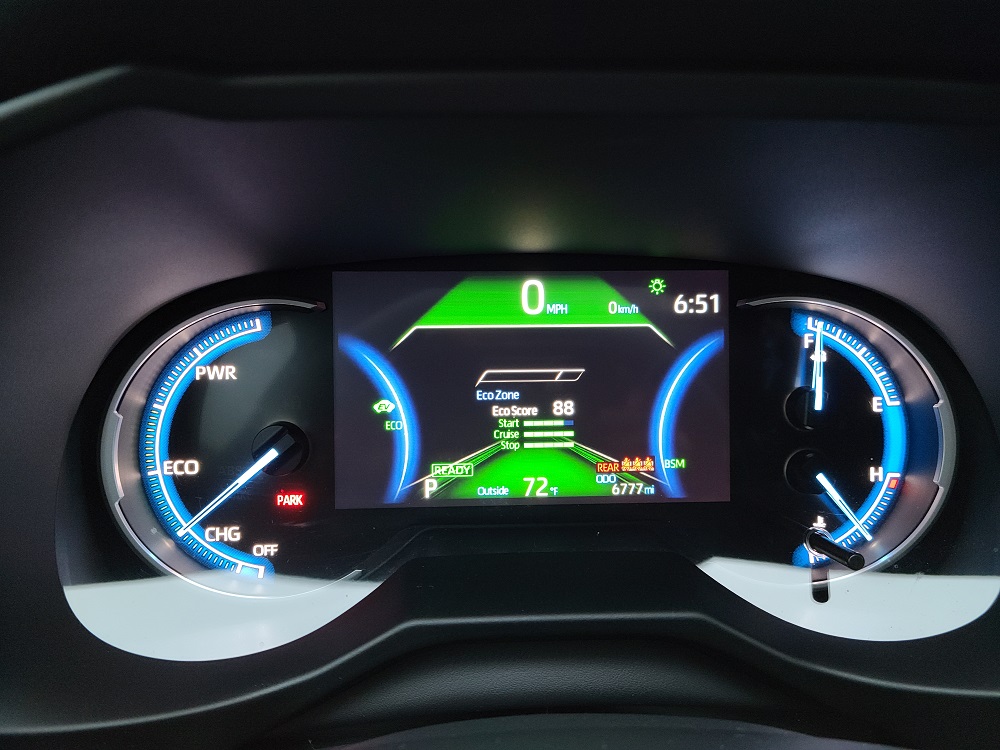
Technological Limitations
Interior instrumentation also seemed like an area that Toyota could improve. This picture fails to demonstrate the proper size of the digital symbols, as I had my phone in front of the steering wheel in order to get a clear picture. For drivers leaning back in their seat, there’s simply too much going on here. Nearly all the readouts are too small. To make matters worse, Toyota’s Eco Zone, Eco Score, and overall hybrid information system never adequately explained what or why the RAV4 decided to switch modes, or how the driver can prevent the internal combustion from activating. I could never grasp when I was on the precipice of coming out of pure EV power.
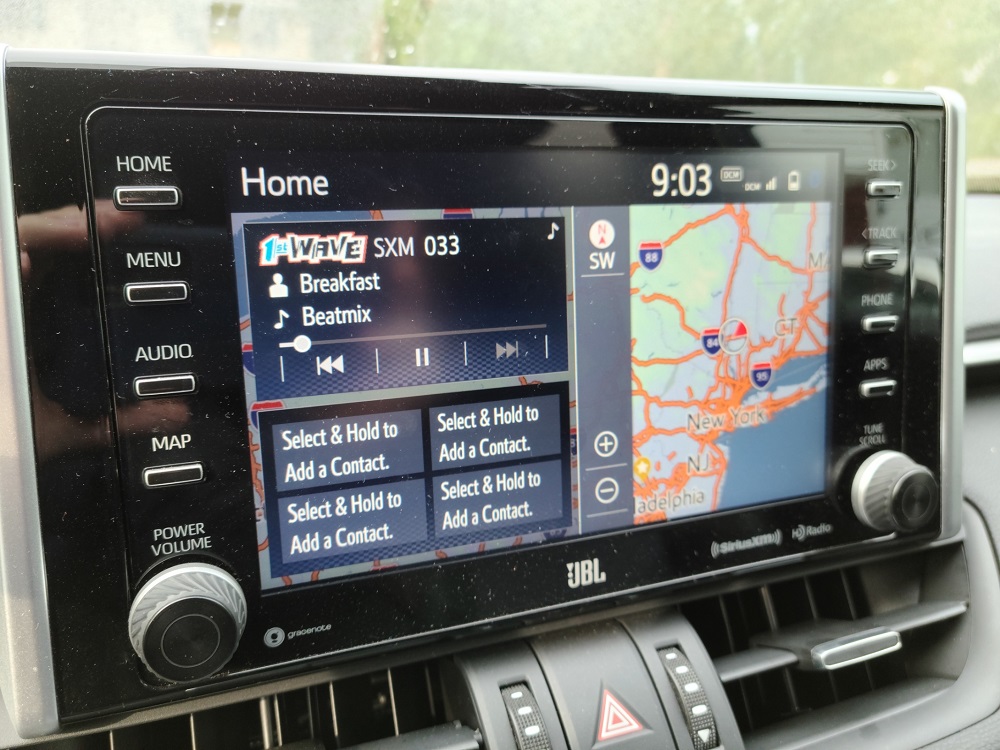
Infotainment
Similarly, Toyota’s 8 inch infotainment could use an update. Despite that admission, it behaved well and remains easy to use. My Samsung Galaxy S20+ worked flawlessly with the system. And Android Auto didn’t seem to confuse it either. Google Maps worked better for navigation purposes than the factory software, but owners will likely find no problems with it. My iPod Touch similarly interacted well with the Rav4 and I was easily able to access my music via voice or by simply using the touchscreen. My main gripe with the regular layout is pictured above. Why does Toyota find it necessary for the phone widget to offer four rectangular sections for easy access calling? Voice activated calling worked extremely well and pretty much negates the need for such an interface. It just didn’t seem needed at all. The presentation is far too cluttered for my taste.
In any event, the optional JBL audio system sounded great. Bass appeared at low volumes and never wavered at higher volumes. Overall sound quality was clear and consistent.
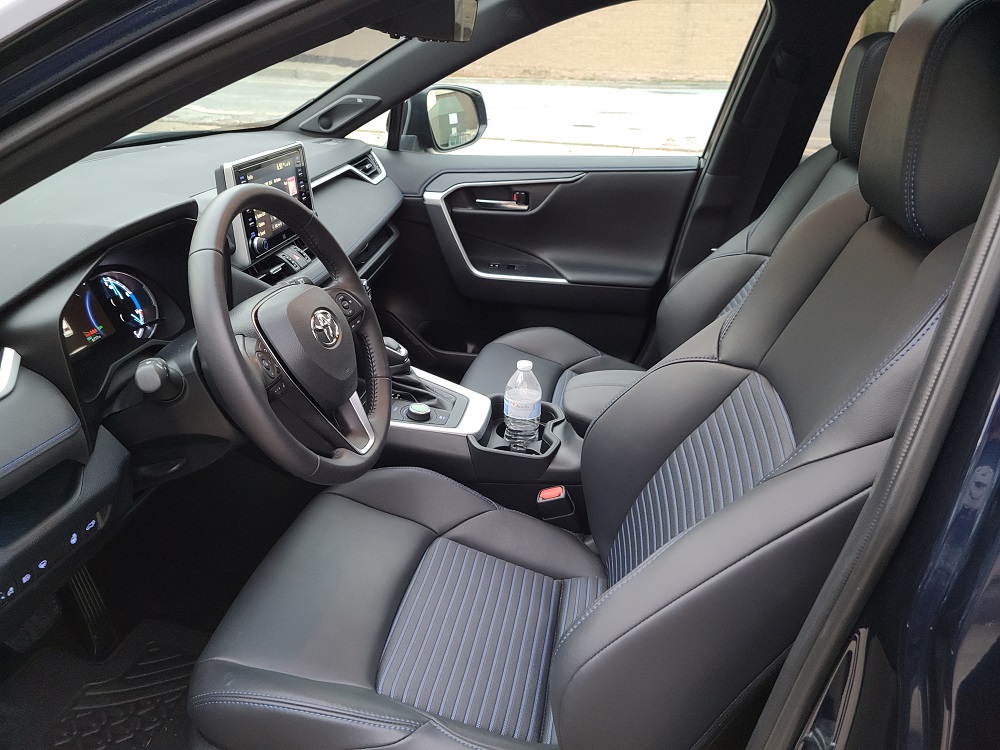
RAV4 Interior Ambiance
While Toyota may need to revise its technological offerings, one area that remains superlative is the interior. Material quality impressed everywhere. Toyota engineered the buttons, dials, and switches with substantial heft. My $38,000 XSE Hybrid could easily compete with something like the Volvo XC40, in addition to the Honda CR-V and Ford Escape. Toyota decided against authentic leather and instead used what they call SofTex trimmed seating, but I highly doubt all but the most extremely passionate cow hide enthusiasts will notice or care. Especially because the seats themselves are well bolstered and comfortable.
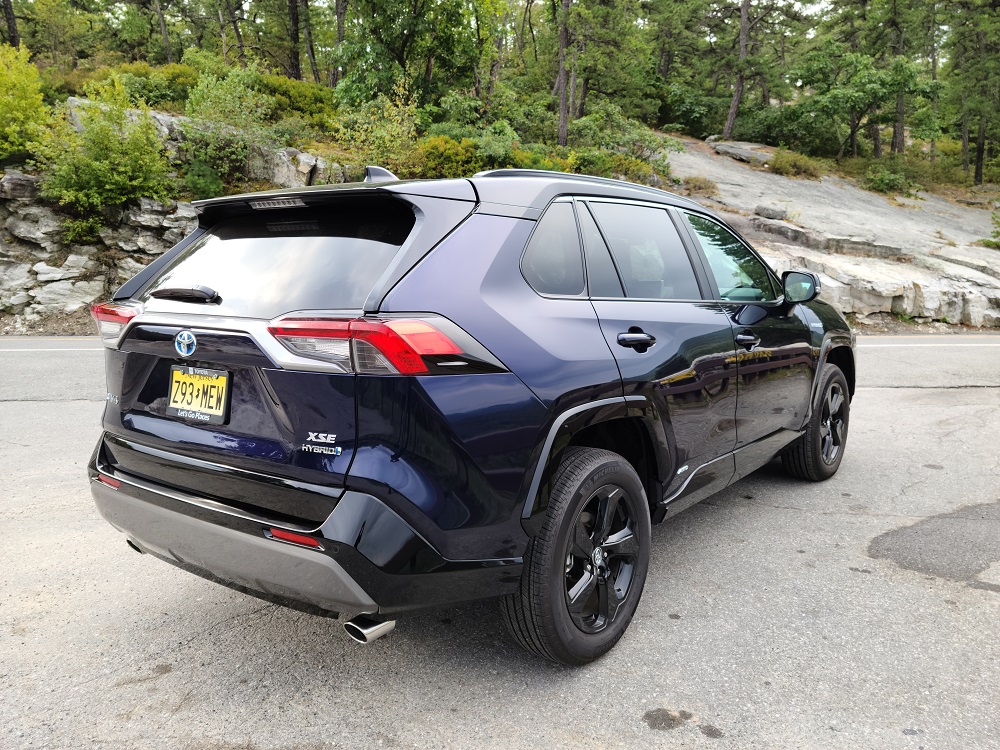
Conclusion
The 2020 Toyota RAV4 XSE Hybrid succeeds on many fronts. It is a legitimate crossover that presents itself as an SUV and in some ways exhibits the best qualities of those larger utility vehicles. Case in point: the styling. Especially with the two tone treatment you see above. But it also handles well and feels quite sprightly. Additionally, Toyota created an extremely smooth and powerful hybrid powertrain that doesn’t really present any compromises when compared to the gasoline variant. Perhaps most importantly, it returned excellent mileage. Without really trying, I managed to get 44 mpg out of the RAV4 with a mix of city and highway driving. That’s good news for people looking to spend less on gas and those interested in how the RAV4 measures up to its EPA rating.
Unfortunately, the RAV4 comes saddled with some technological issues. The driver’s instrumentation could use larger symbols and a better method for explaining hybrid operation. Infotainment is a bit outdated, even if it works well. Although those aren’t deal breakers by any means, because the interior exudes quality and feels like its worth the price. Ultimately, this is a vehicle that can competently please many owners for years to come.
Photos for YotaTech by Edward Snitkoff
